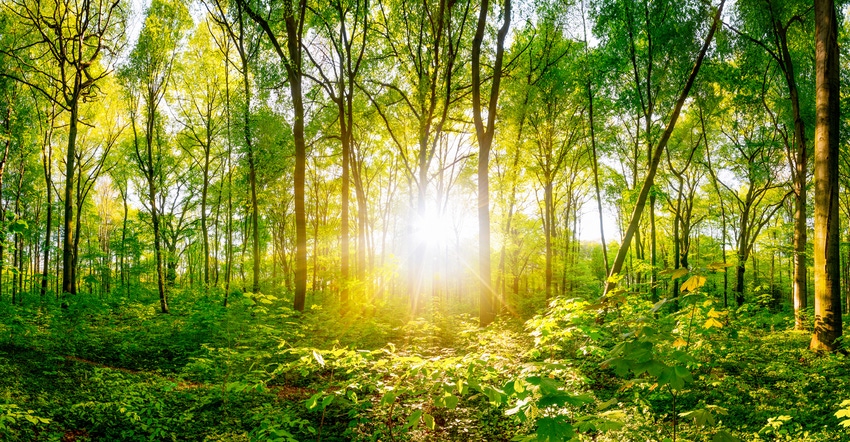August 10, 2020

Where to start, 2020? For sure, this summer has not been a great one for growing trees. Depending on where you live, you may have experienced record rainfall in May, the Mother’s Day freeze, hot and dry conditions from mid-June through mid-July, and then heavy but spotty downpours leading to flash flooding and storm damage.
Plus, there have been many reports of herbicide drift damage and diseases such as anthracnose and oak wilt. As we head into the fall and winter months, we need to prepare trees for next year and give them a good start to the 2021 growing season.
Like past seasons, summer 2020 saw a lot of extremes. Flooding and consistent heavy precipitation, especially in May, led to saturated soils that made it very hard for tree roots to breathe and grow.
If soils remain saturated for extended periods, roots begin to rot and die. Once the soils finally dry out, the tree is required to regenerate new roots and try to repair its belowground infrastructure. If excessive precipitation is followed by hot, dry conditions like we saw in June and July, it makes it that much more difficult for the tree to take up water and transport it to the leaves where it is needed for photosynthesis, nutrient transport, transpiration and other important physiological functions.
It’s like if the plumbing system in your house were damaged, and you don’t have the money or materials to fix it and get the system functioning again.
Ripe for disease
Above ground, excessive moisture and cool, wet conditions, like we saw in May and early June, also promote foliar diseases such as anthracnose, which attack the leaves. Throw in a hard freeze just as oaks and other tree species were leafing out or had tender leaves, and you have a “triple whammy,” which is not a technical tree term. The diseases and below-freezing temperatures kill leaf tissue, delay releafing and force the tree to “go to its savings” to replace or repair lost leaf tissue.
At the same time, the tree is not making much money because photosynthesis is not working efficiently. You may have noticed some of your trees, especially oaks and maples, have had thin canopies, looked off-color (yellow) and had smaller-than-normal leaves this year. Usually, when a tree has to releaf, the second batch of leaves is smaller than normal. These are all signs consistent with possible tree stress.
As summer has progressed, we’ve also seen considerable herbicide drift damage to a wide variety of tree species. Some of this damage did not occur until late June or early July, and in some cases, as much as several weeks after a known spray application. Chemical damage may cause cupping and downward drooping of leaves, and if heavy enough, may kill the leaves, giving the tree a scorched appearance. Damage may also appear on the side of the tree closest to the application while other parts of the tree look fine.
Just like with weather issues, this adds one more stress factor the tree has to deal with. Unless severely damaged, most trees will recover, and new growth should look normal.
Help trees recover
So, with trees facing so many issues, what can you do to help them recover and regain their health?
Pay attention to soil moisture. Trees need adequate moisture to regenerate their root system. One inch of precipitation or irrigation per week during hot, dry spells is a good rule of thumb. Keep in mind, you might get an inch of rain, but if it comes down in just an hour or so, most of it will run off and very little will enter the soil. Those nice, slow soaking rains or irrigation are the best.
For large mature trees, avoid large doses of fertilizer. Like any patient, they need to recover slowly. Do not force them to put a lot of energy into growth. Like humans, mature trees are all about maintaining and not doing a lot of growing.
For younger trees, give them at least one season to regenerate their roots; then apply modest amounts of fertilizer. Mulching; proper pruning to remove dead, diseased, damaged and dying limbs; and insect and disease management are also important. You want to give your trees every advantage as they recover from a tough summer.
Miller is a horticulture professor at Joliet Junior College in Joliet, Ill., and a senior research scientist in entomology at The Morton Arboretum in Lisle, Ill. Email your tree questions to him at [email protected]. The opinions of this writer are not necessarily those of Farm Progress/Informa.
About the Author(s)
You May Also Like




